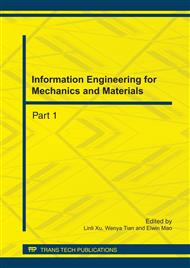p.32
p.36
p.40
p.46
p.51
p.55
p.60
p.64
p.70
Cyclic Oxidation Behaviour of a Ni-Based Alloy at 900°C
Abstract:
The cyclic oxidation behaviour of Ni 5.5Al 2.6Ti 4.8Co 3.9Mo 5.0W 11.0Cr superalloy at 900 °C in air has been investigated by means of measuring the kinetics curves of the oxidation and analysis method of XRD and SEM/EDAX. The results show that the mass gain rapidly increases in the initial stage, and the weight loss and mass gain occurs alternately during the cyclic oxidation. An obvious oxidation and internal oxidation occurs during cyclic oxidation. Ti in the alloy oxidized, diffusing through the Al2O3 and Cr2O3 scales to form faceted TiO2 particle on the surface of the alloy. Al2O3 formed discontinuousness inner oxides in the alloy.
Info:
Periodical:
Pages:
51-54
Citation:
Online since:
July 2011
Authors:
Price:
Сopyright:
© 2011 Trans Tech Publications Ltd. All Rights Reserved
Share:
Citation:


